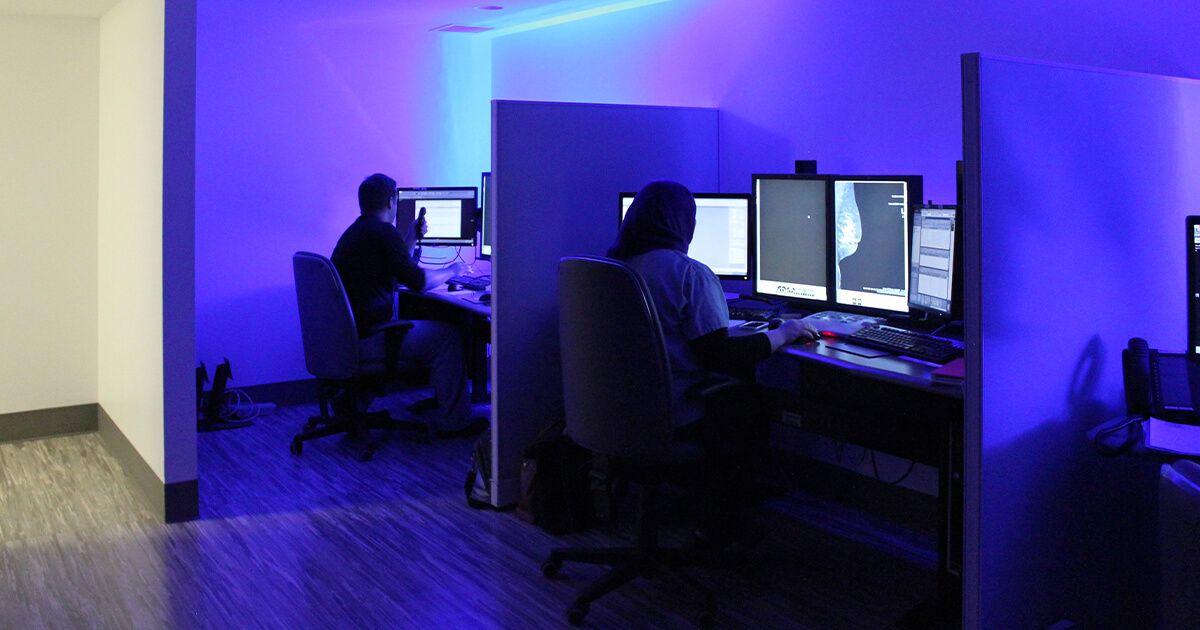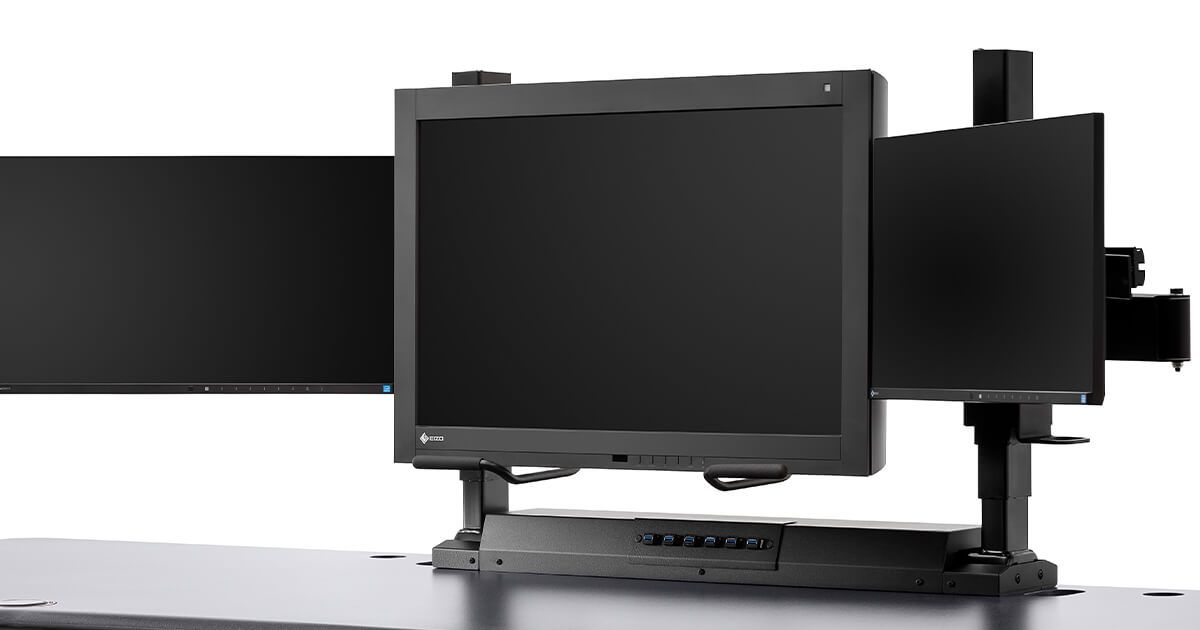
We collect basic website visitor information on this website and store it in cookies. We also utilize Google Analytics to track page view information to assist us in improving our website.

Radiology, a field integral to modern healthcare, requires practitioners to have extensive knowledge in anatomy, pathology, physics, image interpretation, and more.
However, there’s one important subject that often gets overlooked in the education of future radiologists: ergonomics.
This oversight is not due to a lack of awareness. Most radiology students understand the significance of ergonomics, given their in-depth study of the human body. Yet, there’s a gap between this awareness and the practical use of ergonomic practices in their daily routines as students and radiology residents.
The implications of this gap are significant. Considering the high incidence of musculoskeletal disorders among radiologists, it’s clear that ergonomics is not just a matter of comfort but of professional necessity.
This article sheds light on the critical importance of ergonomic workstations in radiologists’ training and daily activities. We will delve into why ergonomic practices are essential, not only for the current well-being of radiologists but also for their long-term health and the accuracy of their diagnoses.
At RedRick Technologies, we design and develop ergonomic workspaces for healthcare professionals that include workstations, monitor mounting solutions, accessories, and peripherals. We also provide ergonomic design services that help organizations implement ergonomic principles for improved space design and functionality. Get in touch and let’s find ways to improve the ergonomic functionality of your workspace.
Radiology education is extensive and demanding. It involves at least four years of medical school, followed by a residency in radiology lasting four to five years, often with additional years for those who specialize further.
This professional path is marked by long and irregular hours, including nights and weekends, particularly on call. Radiologists must be consistently available for urgent imaging studies, which can be both physically and mentally taxing.
The day-to-day responsibilities of a radiologist involve analyzing a high volume of complex imaging studies, requiring sustained concentration and meticulous attention to detail.
This demanding nature of radiology practice has significant ergonomic implications, particularly for those in training and in active practice:
A substantial amount of time for radiology trainees and practising radiologists is spent in reading rooms, analyzing imaging studies for extended periods. This usually involves prolonged sitting and intense focus on computer monitors, leading to potential musculoskeletal strain and fatigue. Ergonomically designed workstations are essential in these settings to prevent such pressure and support physical well-being.
The use of a mouse and keyboard for extended periods can lead to repetitive stress injuries. Incorporating ergonomic accessories, such as trackballs, ergonomic mice, and keyboards, is critical in reducing the risk of these injuries.
The detailed nature of radiological work, especially when interpreting high-resolution images, puts a significant strain on the eyes. Implementing ergonomic solutions like optimal monitor height, appropriate distance, and ambient lighting can help alleviate eye strain and fatigue.
The high cognitive load inherent in radiology can be worsened by physical discomfort due to poor ergonomics. An environment that is ergonomically sound not only mitigates physical stress but also supports better cognitive functioning, thereby enhancing the overall quality of healthcare provided.
This underlines the importance of integrating ergonomic principles into radiologists’ education and daily practice, ensuring their well-being and efficacy in delivering the highest standard of patient care.

Investing in ergonomic solutions, especially in reading rooms, and imparting education about ergonomics to radiologists in training is not just a good practice — it’s necessary for healthcare facilities and educational institutions.
Here are a few of the ways that ergonomics has far-reaching impacts on healthcare quality, financial sustainability, and the well-being of future radiologists:
Diagnostic Precision and Efficiency: Comfort and focus are important in radiology since the accuracy of image interpretation can significantly affect patient outcomes. Ergonomically designed reading rooms contribute to this precision and efficiency, directly impacting the quality of patient care.
Learning and Cognitive Function: For educational institutions, ergonomic environments are more than just comfortable spaces. They are crucial in enhancing the learning experience, enabling students and residents to absorb complex information better and develop professional skills.
Reduction in Musculoskeletal Disorders: The health benefits of ergonomic workstations are clear. By reducing the incidence of musculoskeletal disorders, healthcare institutions safeguard the well-being of their radiologists and mitigate related costs, such as those from absenteeism and potential compensation claims.
Job Satisfaction and Retention: An ergonomic workplace reflects an institution’s dedication to its staff and residents’ health. This commitment can increase job satisfaction, morale, and loyalty, enhancing retention rates and attracting top talent.
Long-term Career Sustainability: Introducing ergonomics early in radiology training encourages adopting good practices throughout one’s career. This foresight helps prevent burnout and early retirement due to health issues, ensuring long-term career sustainability.
Institutional Reputation: Institutions prioritizing ergonomic solutions are often perceived as progressive and caring. This perception enhances their reputation, making them more attractive to prospective residents and professionals.
Long-term Financial Benefits: While there are upfront costs in implementing ergonomic solutions, the long-term financial returns are significant in the form of lowered healthcare costs, reduced absenteeism, improved productivity, and decreased staff turnover.
These points underscore the importance of ergonomic training and equipment in radiology. It’s an investment that pays dividends in terms of healthcare quality, financial savings, and the well-being of medical professionals.
As the field of radiology evolves, so does the need for future radiologists to be well-versed in ergonomic principles. Essential ergonomic practices and considerations for medical students aspiring to specialize in radiology include:
Understanding ergonomics begins with recognizing the importance of posture, a fundamental aspect often overlooked in the rigorous training of radiologists. This involves knowledge of ergonomic seating, optimal desk height, and chair adjustments, tailored to support the body's natural alignment.
Aspiring radiologists must learn not only how to maintain proper posture while interpreting scans but also the value of alternating between sitting and standing, which is key in reducing the physical toll of long hours spent at workstations.
Integrating standing desks or adjustable workstations allows for regular changes in posture throughout the day, alleviating the risk of prolonged strain on the back, neck, and eyes. These are common problem areas for radiologists, often leading to chronic discomfort or injury.
By adopting ergonomic practices early on, future radiologists can prevent injury and improve their focus and efficiency from the start.
The placement of monitors is important in reducing eye strain and glare. Future radiologists should know how to set up their monitors at the ideal angle and distance. The role of ambient lighting in minimizing eye fatigue and headaches is also essential.
A well-designed radiology workstation that follows ergonomic principles is a game-changer. This includes adjustable desks, suitable footrests, and an efficient equipment layout to promote both comfort and efficiency.
The sedentary nature of radiology work means taking regular breaks is important. This is a habit more than a skill, but it helps to start practicing it as early as possible. Including physical activities or exercises to counteract sedentariness is even better.
Ergonomic accessories, such as ergonomic mice and keyboards can significantly reduce the risk of repetitive strain injuries. Aspiring radiologists should consider these products essential tools of the trade.
Future radiologists should know the risks of repetitive strain injuries common in radiology, like carpal tunnel syndrome, and strategies to prevent them. These types of injuries can seriously impact a radiologist’s career, potentially cutting that career short.
Ergonomics is not a one-size-fits-all approach. Knowing how to adjust based on your needs and body type is an excellent skill for aspiring radiologists.
At the core of our philosophy is the understanding that every workspace (and each radiologist) has unique needs. This drives our commitment to delivering customized, user-friendly solutions, particularly in complex environments like radiology reading rooms and learning spaces.
Our design proposals and product offerings are tailor-made, aligning perfectly with each client’s requirements. This customization is critical in settings like radiology reading rooms, where the precision and accuracy of diagnoses heavily rely on the comfort and efficiency of the workspace.
A key principle in our designs is prioritizing ease of use. We understand that the best ergonomic solutions integrate seamlessly into the daily routines of professionals.
To this end, our products are adjustable, intuitive, and robust. This durability ensures that they stand up to the demands of a busy radiology department, providing prolonged comfort and support over time.

Height adjustable desktop (standard/critical feature)
Our recommended/standard range of adjustment is 24-49.5” above the floor
ANSI BIFMA standard of 22-48” is also available
The size and shape of a desktop are limitless and determined by physical space available, computer hardware to be hosted, and user preference.
Height adjustment (standard/critical feature)
Motorized height adjustment providing 12” of vertical range
All monitors adjust simultaneously
Virtually any monitor configuration can be accommodated
Focal distance adjustment (standard/critical feature)
Effortless manual adjustment, found to be the most intuitive and easy-to-engage method, providing 16” of horizontal forward/back range as well as 60 degrees of side-to-side swivel
Virtually any monitor configuration can be accommodated
Our monitor mounts can handle the heaviest monitor setups. These monitor mounts are designed to accommodate large, high-resolution displays and multiple screens for demanding tasks.
Unlike traditional “split-level” or “keyboard tray” models, RedRick’s mounts allow for single-work-surface solutions that retain maximum useable space, while providing superior, intuitive, and easy ergonomic adjustment.
At RedRick Technologies, we design and develop ergonomic workspaces for healthcare professionals that include workstations, monitor mounting solutions, accessories, and peripherals. We also provide ergonomic design services that help organizations implement ergonomic principles for improved space design and functionality. Get in touch and let’s find ways to improve the ergonomic functionality of your workspace.